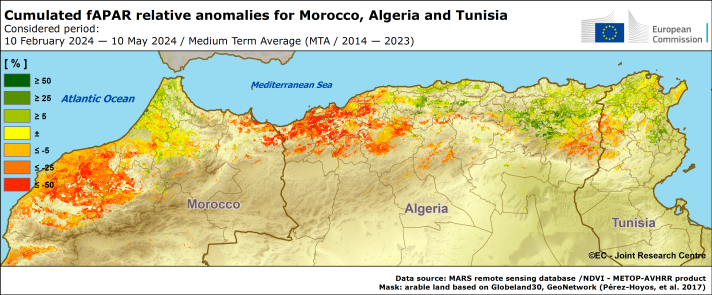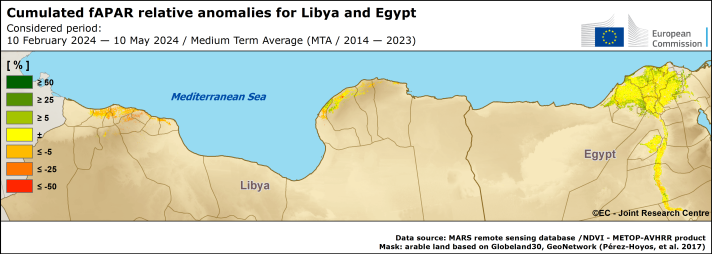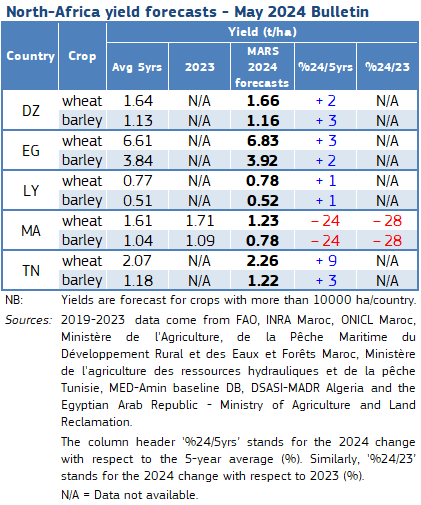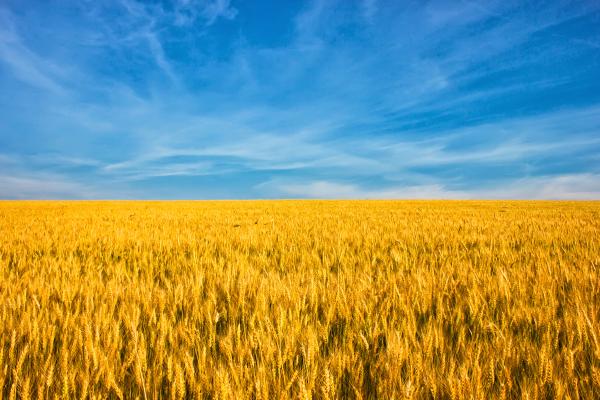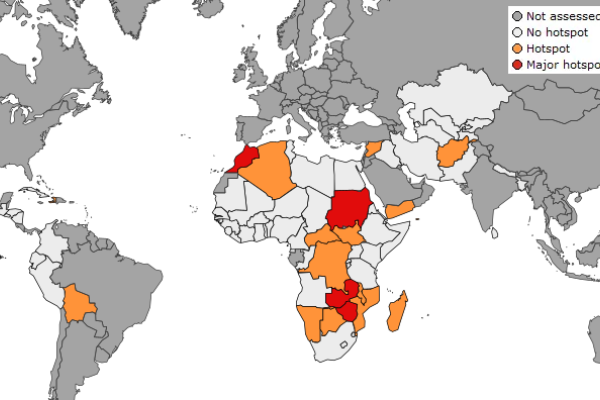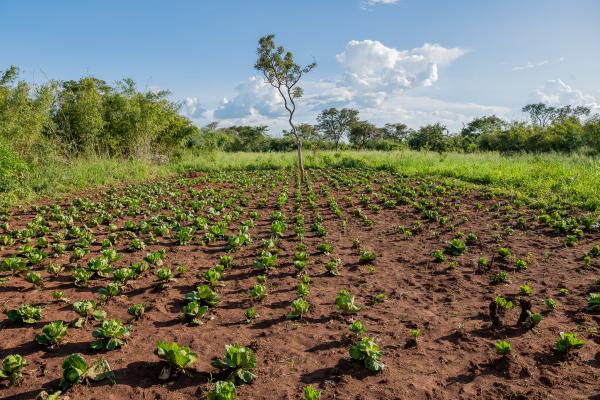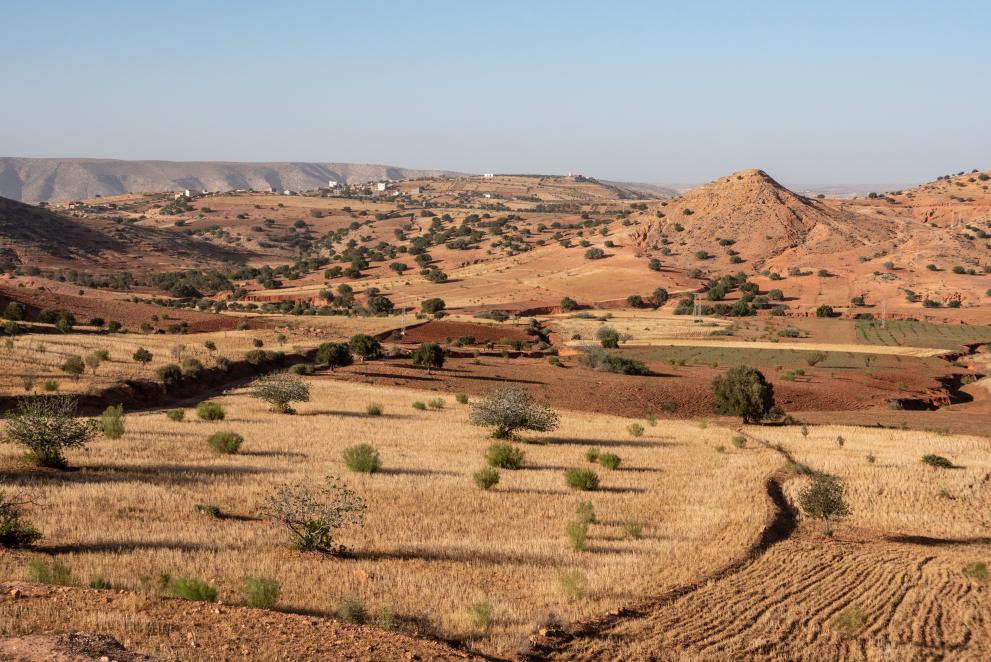
Conversely, in the central and eastern coastal regions of Algeria, abundant rainfall in February and wide availability of irrigation enabled crops to recover from the preceding dry conditions to above-average biomass accumulation levels. In Tunisia, evenly distributed rainfall in February and early March, coupled with warm temperatures, sustained above-average crop growth throughout the February – May review period.
Looking at the eastern countries of North Africa, heatwaves during flowering hampered crop growth in the western coast belt area of Libya, while an average to above-average biomass accumulation was observed in the main agricultural region in the north-east of the country. Favourable growing conditions have prevailed in the main cereal-producing regions of Egypt.
Highlights
- Morocco (MA): negative outlook for cereal production. Barley and wheat performed badly in most of the main production regions. Cereals are in the advanced ripening stage.
- Algeria (DZ): marked negative anomalies for the agricultural north-western regions. Crop conditions are average to positive in a large belt of littoral and continental regions in central and eastern Algeria. Crops are in the advanced ripening stage.
- Tunisia (TN): favourable growing conditions allowing a rapid crop recovery in the main cereal-producing regions of the country. Winter cereals have reached the ripening stage.
- Libya (LY): along the north-western coastline, crop flowering hampered by hot spells. More favourable conditions prevailed along the north-eastern coastline. Cereals are ready for harvesting.
- Egypt (EG): average to above-average expectations for cereal production. Crops are faring well thanks to the predominantly irrigated arable land. Harvesting is about to begin.
Observed canopy conditions
fAPAR relative anomaly maps: the maps display differences between the Fraction of Absorbed Photosynthetically Active Radiation (fAPAR) computed from remote sensing imagery between 11 February to 10 May 2024, and the medium-term average (2014-2023) fAPAR for the same period. Positive anomalies (in green) reflect above-average canopy density, while negative anomalies (in red) reflect below-average canopy density.
Yield forecast
Further information
JRC MARS (Monitoring Agricultural Resources) Bulletins
The latest information about global agricultural production hotspots for countries at risk of food insecurity is available on the JRC’s ASAP (Anomaly hot Spots of Agricultural Production).
Details
- Publication date
- 27 May 2024
- Author
- Joint Research Centre
- JRC portfolios

